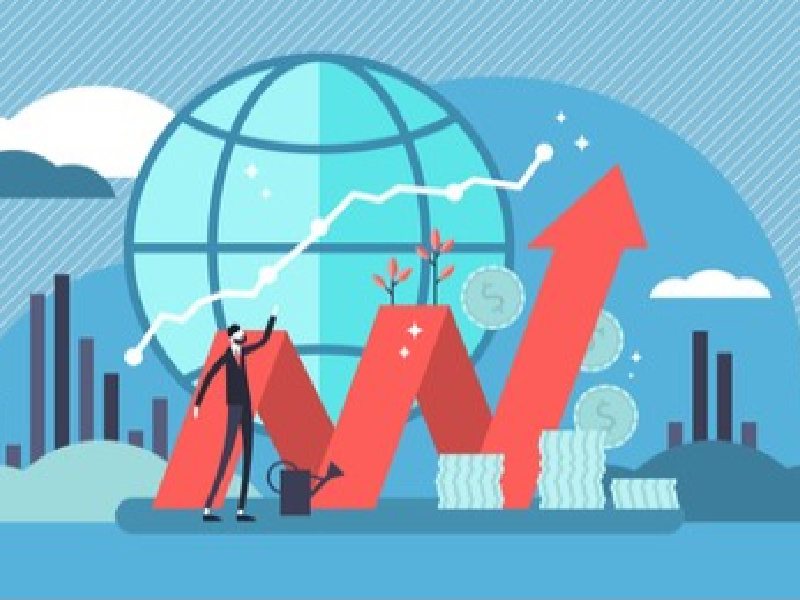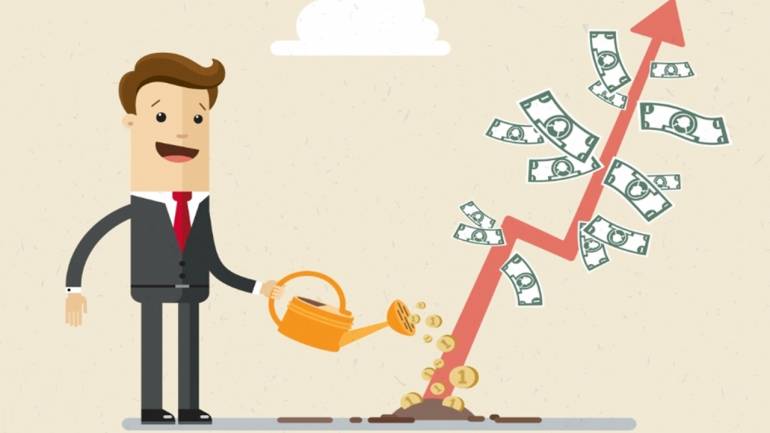
There is a constant conversation about the economic state of a country on the national and international levels. A country studies its economic levels and its future projections based on a cohesive study of various factors like geo-political scenarios, industrial outlook, stock markets, interest rates, etc. therefore, it is imperative to understand the relationship between various macro and micro economic factors and the impact of the same on the economy as a whole. We have seen the impact of interest rates and inflation on the stock markets. Let us now understand the impact of the overall economic conditions on the stock markets and how the two are interlinked.
Read More: How does inflation impact the stock market?
What is the economy of a country?
The term economy of a country is often used synonymously with the GDP of the country. While they can broadly be used to refer to the state of the economy of a country, the term economy has wide bearings on its own. The term economy of a country includes various concepts like the consumption in the country, the sale and production of goods and services in the country, the demand and supply, future projections for the growth of various industries, employment opportunities, etc.
GDP, on the other hand, is referred to as the measure of the economic activity in the country. When we talk about the economy of a country we also talk in terms of the quality of the economy irrespective of its size and the economic conditions faced by a country like recession, stagnation, expansion, contraction, etc.
What is the relationship between the economy and stock markets?
Stock markets are usually assumed to provide the immediate mirror reflection or the general perception of the country or the investors as a whole about the economy and the factors that have an impact on the same. Therefore it becomes crucial to understand the relationship between the economy and stock markets to understand the potential impact of one on another.
- Fluctuations in stock markets
Stock markets are inherently volatile in nature and fluctuate based on the investor’s perception or reaction to any national or international, corporate, or political news and developments. The various market trends reflect the economic position of the country and influence it as well. In a bullish market, investors tend to invest more which further gives a boost to the economy. It generates confidence among retail and institutional investors bringing a positive outlook or feeding an economic boom as well.
On the other hand, any bearish market can drive a pessimistic view of the economy or further fuel the negative impact on the economy as a whole. People tend to be less confident about the future prospects of the economy and thereby tend to spend less, further impacting the economic conditions and reducing the growth rate of an economy.
- Analysis of consumer spending
The level of consumer spending is directly in correlation with the state of the economy and impacts the stock markets eventually. When a country’s economy is on a growth or increasing trajectory, consumers spend more not only on essentials but also on luxury goods on account of higher disposable income. This eventually adds to their wealth as well as that of the corporates and feeds their bottom line. The reflection of the same is also seen in their share prices ultimately aiding in building the wealth of the nation.
On the other hand, a company facing a recession will have consumers spending less on luxury items and the stocks of such companies will take an immediate hit. The reduced demand for these stocks will eventually rise again in a booming economy but that may take a long time to happen.
- Contribution of corporates
The corporates add directly to the economic activities of the country. In a booming economic period or in a time of recovery, there is an increasing amount of investments that are made by the corporates towards growth and expansion or diversification of their business lines. This generates additional revenue which in turn improves the profits for the company resulting in an increased demand for their shares.
This increase in demand for shares of such companies adds to their price and a more bullish trend. These corporates on the other hand cut back on their costs and investments to stay afloat during a recession. This is a time of high-interest rates which results in lower borrowings and reduced demand for their products and services, ultimately impacting their share prices.
- Impact on other investment options
The impact of the chaining economic conditions and stock market volatility is also on other investment products like the bond market, debt funds, and other traditional investment options like PPF, NSC, NPS, etc. When the markets are down and highly volatile, investors tend to move away from investment in shares and move towards safer investment options that provide higher returns. The bond market and debt funds tend to become more attractive and the increased demand also reflects in their prices. Investors also seem to invest more in gold as they are traditionally seen as a safer investment option. Also, gold prices always increase in the long term which makes it further attractive to investors.
Conclusion
Stock markets and the economy always move in the same direction in the long run. However, there may be a case of one of them reacting earlier (usually stock markets) and the other following in tandem. The relationship between the economy and stock markets is one that impacts the microeconomic as well as macroeconomic levels and hence the study of the same is imperative in understanding the current and future growth trajectory of a country.
FAQs
Some of the safer investment options when stock markets crash are gold, bonds, sovereign bonds, SGBs, debt funds, PPF, Bank FDs, etc.
In a recovering economy, investors tend to gain more confidence in future gains and therefore invest more in stock markets.
In a falling economy, there are lower employment opportunities. This results in cost-cutting and lowers disposable income reducing investment in stock markets and an overall bearish trend.
By having a diversified portfolio that has different investment options like bonds, stocks, commodities, real estate, currency, etc., investors can reduce the impact of falling stock markets as well as a hedge on their risk from investment in pure stocks. Therefore, it is important to have a diversified portfolio to counter the changing ergonomic cycles as well as the stock market volatility in short term or long term.



























